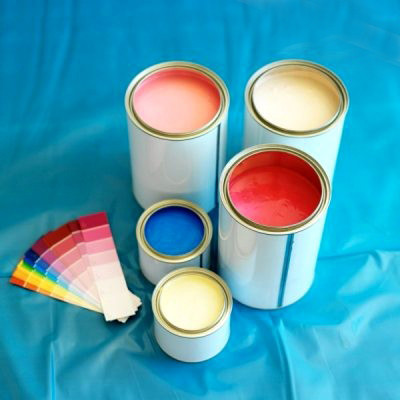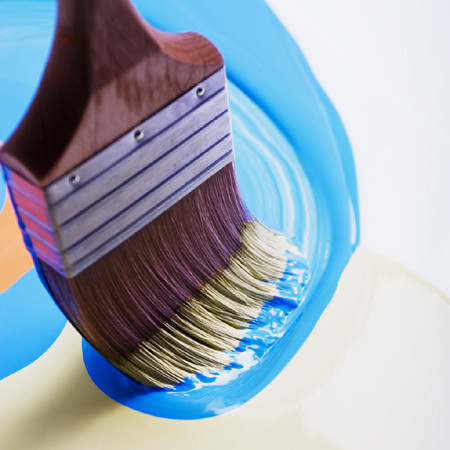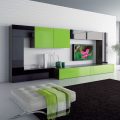 Paints and Coatingsactual painting of walls and ceilings, but at a higher technological level. This is ensured, above all, by the qualitative improvement of the decorative and operational properties of lacquer coatings and the expansion of base types for painting. Domestic builders have to master new, advanced technologies on the go, often learning from their own mistakes. Unfortunately, there are practically no specialized training centers, competent sales support and technical support. As a result, when performing work, elementary technological rules are violated, and builders expect that high-quality finishing material will cover all the flaws in the preparatory stages of work. However, the statistics of paint coatings claims shows that:
Paints and Coatingsactual painting of walls and ceilings, but at a higher technological level. This is ensured, above all, by the qualitative improvement of the decorative and operational properties of lacquer coatings and the expansion of base types for painting. Domestic builders have to master new, advanced technologies on the go, often learning from their own mistakes. Unfortunately, there are practically no specialized training centers, competent sales support and technical support. As a result, when performing work, elementary technological rules are violated, and builders expect that high-quality finishing material will cover all the flaws in the preparatory stages of work. However, the statistics of paint coatings claims shows that:
- about 70% of all causes of defects are improper preparation of the base,
- about 15% - incorrect choice of paint system,
- about 10% - non-compliance with application technology
- and only 5% is poor quality paint.
Preparing the baseBefore starting work, the paintermust assess the quality of the base. For this, visual control is used first of all. This determines the type and condition of the base material, visible damage, and identifies technological errors in its execution. The type and composition of the base allows you to assess its effect on the coating and choose the right painting system. The base can be made of organic or inorganic materials, have a porous or dense structure. In addition, it is necessary to assess how clean and dry it is; there should be no formwork release on concrete bases. Possible voids or peeling are determined by tapping the plaster. If an old paint and varnish coating is used as a base, its strength can be determined by testing with masking tape: it is necessary to stick it to the surface and then quickly tear it off. If the coating is not damaged, then its strength is sufficient. It is very important for the correct execution of work to check the absorbency of the base. For this, the surface is moistened. Depending on the rate of moisture absorption, a distinction is made between highly absorbent, normally absorbent and weakly absorbent bases. If water quickly goes into the base, then when applying water-diluted compounds, the film formation process is disrupted and the coating will not gain sufficient strength. Therefore, in this case, it is necessary to use special primers. A serious problem is the unequal absorption capacity of different parts of the base. This can occur when using different materials in the base. If this difference is not eliminated, the transition boundaries will be visible on the finished paint and varnish coating. And if, as a result of inspection, chalking or crumbling of the base is revealed, the presence of such a defect can lead to the fact that the finishing coat will peel off together with the top layer of the base. If such properties of the base are detected, special primers must be used for them. They must be unpigmented and finely dispersed, sufficiently liquid and penetrate capillaries well, not dry out too quickly, provide adhesion for subsequent coatings, and not form a thick film. When applied, such primers should not form a glossy film. Surfaces with normal and uniform absorption capacity do not need to be treated with special primers; it is enough to apply paint with a small addition of water (the percentage of dilution is usually indicated in the description). Then you can apply the final layer without dilution. Bases that poorly absorb moisture are treated with pigmented primers that have particularly high adhesion or form chemical compounds with the base. They are applied in a fairly thick layer and serve as a connecting bridge between the base and the next coating. Primers with the addition of fine quartz sand are used under decorative and gypsum plasters. Then there is no need for outdated methods of improving the adhesion of the decorative layer to the base - applying notches or attaching a special mesh. Selecting a system The correct choice of paint system will ensureoptimal service life and at the same time will allow to avoid unnecessary expenses. Most often the choice is between acrylic, silicate and silicone systems. When choosing one or another system it is necessary to take into account the operational requirements for the coating, their physical properties, as well as the features of the color scheme. Acrylic dispersion paints contain polymers or copolymers of acrylic as a binder. Systems based on them are suitable for almost all bases used in construction. Acrylic paint coatings have good vapor permeability, i.e. they allow the base to "breathe". Under normal operating conditions, they provide the optimal price/quality ratio. In addition, such coatings offer the greatest possibilities for the color design of surfaces. In silicate-based materials, liquid potassium glass serves as a film-forming agent, which is obtained by jointly melting potash and quartz with subsequent dissolution of the resulting product in water. This binder is classified as mineral. Film formation, unlike acrylic paints, occurs as a result of a two-stage chemical reaction. Silicate paints are used mainly for painting mineral bases, such as concrete, sand-lime brick, etc., as well as surfaces previously painted with mineral paints. They have the highest permeability for water vapor and carbon dioxide, so this is the best solution for painting old buildings and architectural monuments. An important property of silicate coatings is that they do not support the development of microorganisms and therefore do not require special biocidal additives. However, the high alkalinity of the paint makes it necessary to protect glass, aluminum, natural stone from splashes when applying, which can leave indelible stains. Only alkali-resistant and liquid potassium glass-resistant pigments should be used for tinting, so the color range of silicate materials is very limited. Silicone paints are among the most modern paints. They combine almost all the best properties of acrylic and silicate paints. First of all, it is high permeability for water vapor and carbon dioxide (in silicone paints these indicators are close to silicate), but with high water-repellent ability of the surface. They are suitable for almost all types of mineral surfaces, are well compatible with both mineral and synthetic paints. Silicone coatings, as well as silicate ones, do not support the development of microorganisms. Therefore, they do not require the use of special fungicidal and algaecidal additives. Silicone paints have the best decorative and operational properties of coatings at present. The only drawback limiting their use is their high cost.
The correct choice of paint system will ensureoptimal service life and at the same time will allow to avoid unnecessary expenses. Most often the choice is between acrylic, silicate and silicone systems. When choosing one or another system it is necessary to take into account the operational requirements for the coating, their physical properties, as well as the features of the color scheme. Acrylic dispersion paints contain polymers or copolymers of acrylic as a binder. Systems based on them are suitable for almost all bases used in construction. Acrylic paint coatings have good vapor permeability, i.e. they allow the base to "breathe". Under normal operating conditions, they provide the optimal price/quality ratio. In addition, such coatings offer the greatest possibilities for the color design of surfaces. In silicate-based materials, liquid potassium glass serves as a film-forming agent, which is obtained by jointly melting potash and quartz with subsequent dissolution of the resulting product in water. This binder is classified as mineral. Film formation, unlike acrylic paints, occurs as a result of a two-stage chemical reaction. Silicate paints are used mainly for painting mineral bases, such as concrete, sand-lime brick, etc., as well as surfaces previously painted with mineral paints. They have the highest permeability for water vapor and carbon dioxide, so this is the best solution for painting old buildings and architectural monuments. An important property of silicate coatings is that they do not support the development of microorganisms and therefore do not require special biocidal additives. However, the high alkalinity of the paint makes it necessary to protect glass, aluminum, natural stone from splashes when applying, which can leave indelible stains. Only alkali-resistant and liquid potassium glass-resistant pigments should be used for tinting, so the color range of silicate materials is very limited. Silicone paints are among the most modern paints. They combine almost all the best properties of acrylic and silicate paints. First of all, it is high permeability for water vapor and carbon dioxide (in silicone paints these indicators are close to silicate), but with high water-repellent ability of the surface. They are suitable for almost all types of mineral surfaces, are well compatible with both mineral and synthetic paints. Silicone coatings, as well as silicate ones, do not support the development of microorganisms. Therefore, they do not require the use of special fungicidal and algaecidal additives. Silicone paints have the best decorative and operational properties of coatings at present. The only drawback limiting their use is their high cost.









